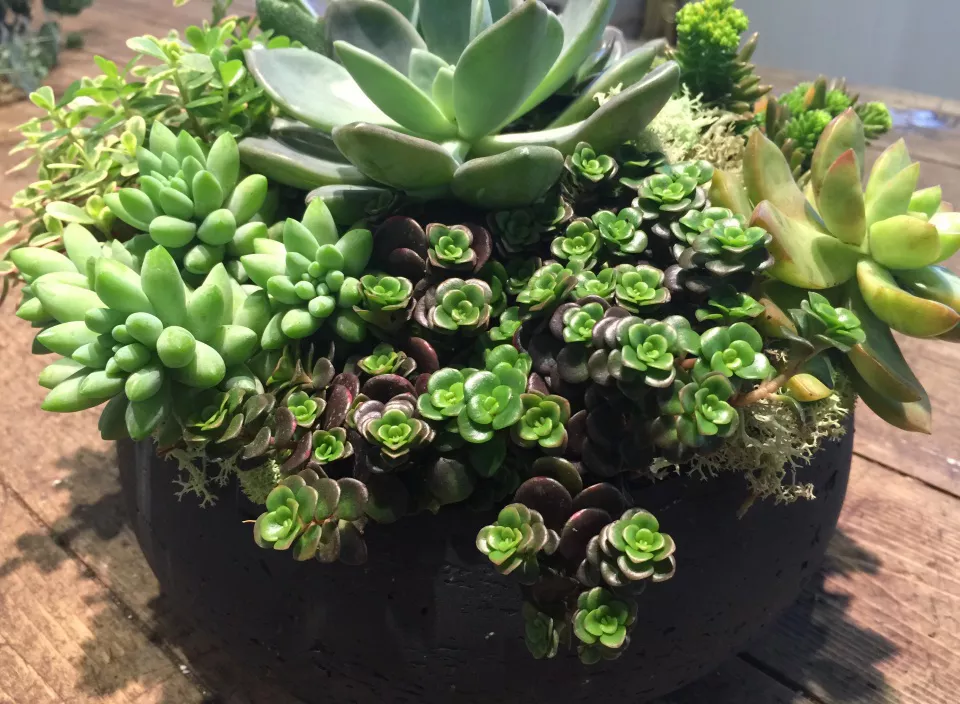Succulents, with their unique and captivating forms, have gained popularity as resilient and low-maintenance plants. However, even these hardy plants are not immune to certain pests, and one common intruder that succulent enthusiasts often encounter is the mealybug. These small, sap-sucking insects can wreak havoc on succulents if not addressed promptly. In this comprehensive guide, we will explore effective methods to identify, prevent, and treat mealybug infestations on succulents, ensuring that these beloved plants continue to thrive in optimal conditions.
Understanding Mealybugs and Their Impact on Succulents
Mealybugs are soft-bodied, wingless insects that belong to the family Pseudococcidae. They are named for the white, mealy wax coating that covers their bodies, providing them with protection and resistance to water. Mealybugs are notorious for infesting a variety of plants, including succulents, by feeding on their sap. Their piercing-sucking mouthparts extract vital nutrients from the plant, leading to stunted growth, yellowing, and even the death of affected areas. In the case of succulents, mealybugs often target the fleshy leaves and stems, posing a threat to the plant’s overall health.
Identifying Mealybug Infestations on Succulents
Visual Inspection:
The first step in treating mealybugs on succulents is to identify their presence. Conduct regular visual inspections of your succulent plants, paying close attention to the leaf axils, joints, and undersides of leaves. Mealybugs often gather in these hidden and protected areas.
Cotton-Like Residue:
A distinctive sign of mealybug infestation is the presence of a cotton-like, white residue on the plant. This substance is the waxy secretion produced by mealybugs for protection. If you notice this powdery residue on your succulents, it’s a clear indication of a mealybug problem.
Sticky Honeydew:
Mealybugs excrete a sticky substance called honeydew as they feed on plant sap. This honeydew can attract ants and promote the growth of sooty mold on succulents. If you observe a sticky film on your plants or notice the presence of ants, it may be linked to a mealybug infestation.
See Also: How to plant succulent in pot without drainage?
Preventing Mealybug Infestations in Succulents
Isolation and Quarantine:
When introducing new succulents to your collection, it’s advisable to isolate them for a period before integrating them with existing plants. This quarantine allows you to monitor the new additions for any signs of pests, including mealybugs, and prevent potential infestations from spreading.
Optimal Growing Conditions:
Healthy and well-maintained succulents are more resilient to pests. Provide your succulents with optimal growing conditions, including well-draining soil, appropriate sunlight, and adequate airflow. Avoid overwatering, as mealybugs are attracted to moisture.
Natural Predators:
Encourage natural predators of mealybugs, such as ladybugs and lacewings, in your garden. These beneficial insects feed on mealybugs and can help keep their populations in check. Planting a variety of flowers and herbs can attract these predators to your succulent garden.
Regular Inspections:
Implement a routine inspection schedule for your succulents. Regularly check for early signs of mealybug infestations, such as the presence of cotton-like residue or sticky honeydew. Early detection allows for prompt intervention, preventing the escalation of the problem.
Treating Mealybugs on Succulents: Step-by-Step Guide
Isolate Infected Plants:
Upon detecting a mealybug infestation, promptly isolate the affected succulent to prevent the spread of the pests to nearby plants. Place the isolated plant away from other succulents until the infestation is successfully treated.
Manual Removal:
For a minor infestation, manually remove mealybugs using a cotton swab or a soft brush dipped in rubbing alcohol. Gently dab the insects with the alcohol-soaked swab or brush, ensuring thorough coverage. This method is effective for targeting individual mealybugs.
Horticultural Oil or Neem Oil:
Horticultural oil or neem oil can be effective natural remedies for mealybug control. Dilute the oil according to the product instructions and apply it to the affected succulent, ensuring complete coverage of leaves, stems, and the soil surface. These oils work by suffocating the mealybugs and disrupting their feeding.
Insecticidal Soap:
Insecticidal soap is a safe and effective option for treating mealybugs on succulents. Choose a product specifically labeled for use on succulents and follow the application instructions. The soap disrupts the mealybugs’ cell membranes, leading to their demise.
Biological Control:
Introduce natural predators, such as ladybugs or predatory beetles, to your succulent garden. These beneficial insects feed on mealybugs and can contribute to the natural balance of your garden ecosystem. Release them strategically to target areas with mealybug infestations.
Repeat Treatments:
Mealybug infestations may require repeat treatments to ensure complete eradication. Follow-up applications of the chosen treatment method at regular intervals, closely monitoring the succulents for any signs of resurgence.
Preventive Measures:
Even after successfully treating a mealybug infestation, it’s crucial to implement preventive measures to avoid future problems. Maintain good plant hygiene, regularly inspect your succulents, and consider introducing natural predators to create a resilient and balanced environment.
Conclusion
Succulents, with their captivating beauty and resilience, can fall victim to mealybug infestations, but with prompt and effective treatment, these plants can recover and thrive once again. By understanding the signs of mealybug presence, implementing preventive measures, and employing targeted treatment strategies, succulent enthusiasts can ensure the health and longevity of their cherished plants. Regular care, vigilance, and a proactive approach to pest management are essential components of maintaining a flourishing succulent garden.


